Your 2100 Calorie Meal Plan Isn’t Working Because You’re Missing These Hidden Metabolic Triggers

According to the World Food Programme, having access to more than 2,100 calories per person per day represents the baseline for adequate nutrition and food security. Yet many people following 2100-calorie meal plans still struggle with hunger, energy crashes, and unsatisfying results – not because they’re eating too little, but because they’re missing the hidden factors that determine how those calories actually work in their bodies.
Look, I spent months feeling hungry and tired on what should have been plenty of food. Turns out, it wasn’t about eating more – it was about understanding some weird stuff about timing, psychology, and how my particular body handles food. Your body might be totally different from mine, but here’s what I figured out.
Table of Contents
- When Your Body Clock Dictates Calorie Success
- The Psychology Behind Why 2100 Calories Never Feels Like Enough
- Why Your Genetics Make Generic Meal Plans Useless
- The Environmental Factors Sabotaging Your Best Efforts
- Making the Jump from 2000 to 2100 Calories Without Metabolic Chaos
TL;DR
- Your body processes the same 2100 calories completely differently depending on when you eat them – morning calories get burned while evening calories get stored
- Feeling hungry on 2100 calories isn’t about willpower; it’s about your taste buds getting bored and your brain craving variety
- Generic meal plans fail because what makes you, you – your stress response, gut bacteria, and how your body handles different foods – determines how those calories actually work
- Sleep quality, exercise timing, and social situations can make or break your 2100-calorie success more than the food itself
- The transition from 2000 to 2100 calories requires strategic placement of those extra 100 calories, not just eating more of everything
When Your Body Clock Dictates Calorie Success
Most people approach their 2100 calorie meal plan by dividing calories evenly throughout the day, but this completely ignores how your body’s internal clock dramatically changes how it processes food. Turns out your metabolism is basically like a moody teenager – it acts totally different depending on what time it is.
Understanding these natural rhythms can transform how satisfied and energized you feel on the same number of calories. I’ve noticed that when I shifted my meal timing – without changing what I actually ate – my energy got so much better.
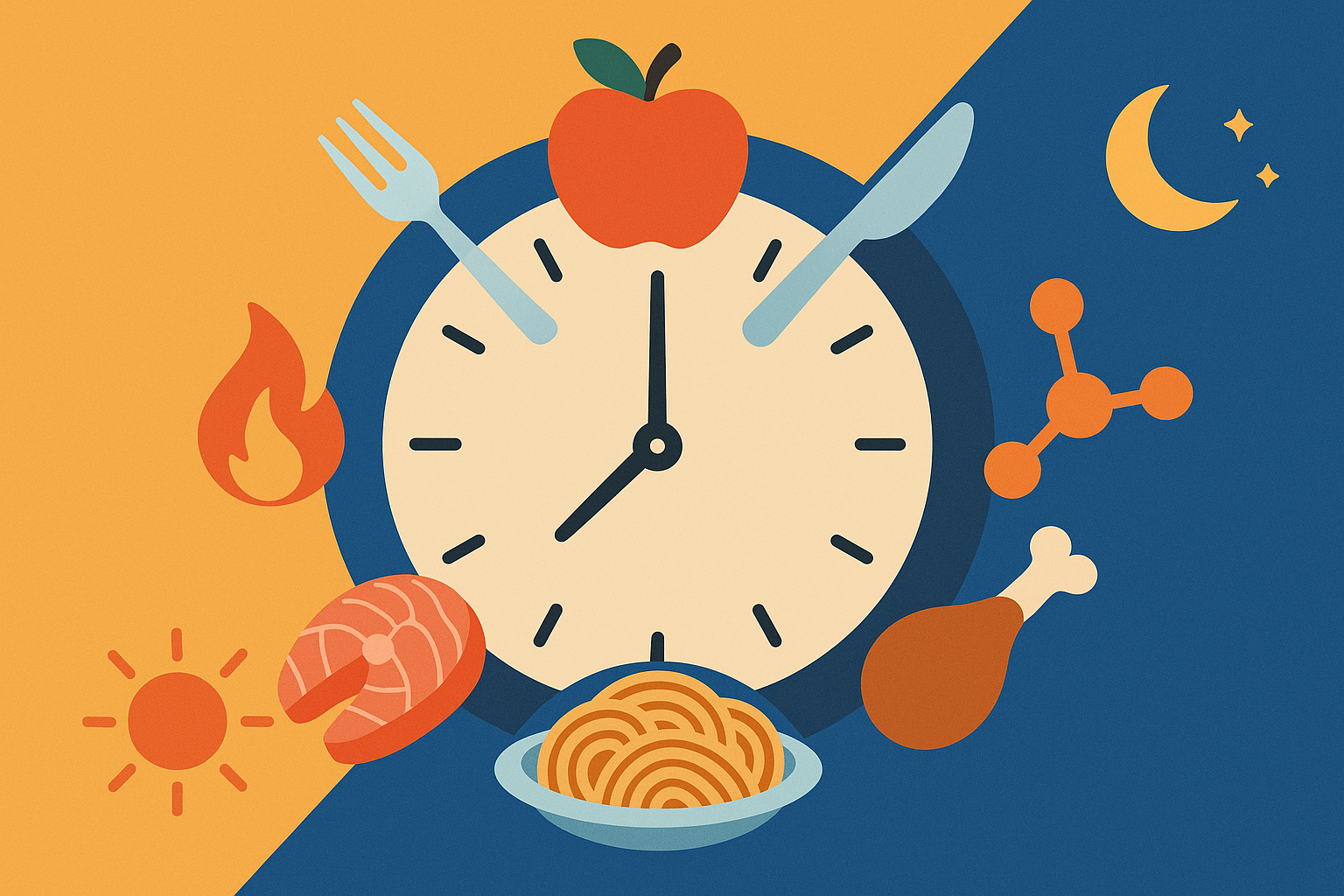
So here’s the weird thing I discovered about breakfast timing…
Between 6-9 AM, your body creates the perfect storm for processing food. All your hormones spike, your body is primed to turn food into energy rather than storage, and you can basically get away with eating way more than you’d think. This isn’t theory – it means you can eat 35-40% of your daily calories (735-840 calories) during this window without the consequences you’d face eating the same amount at night.
That morning hormone surge everyone talks about? It’s actually your friend.
That natural morning hormone surge everyone talks about? It’s not something to fight against – it’s your metabolic superpower. Your body is literally designed to handle larger amounts of food in the morning, which is why front-loading your 2100 calories can feel so much more satisfying than spreading them evenly.
I started calculating exactly 35-40% of my 2100 calories for breakfast and honestly, it completely changed my energy levels. We’re talking about 735-840 calories of real, substantial food – not some tiny bowl of cereal. When you front-load 30-35g of protein and complex carbs during this window, your body actually thanks you for it.
Here’s what I do: I calculate my morning calories first, then build the rest of my day around what’s left. Most people do it backwards and wonder why they’re starving by 3 PM. My “strategic breakfast” is often just scrambled eggs while checking emails, but at least it’s a lot of scrambled eggs.
| Time Window | Optimal Calorie Distribution | Recommended Macros | Why It Works |
|---|---|---|---|
| 6-9 AM | 735-840 calories (35-40%) | 30-35g protein, 60-80g carbs | Peak insulin sensitivity, cortisol surge |
| 12-2 PM | 525-630 calories (25-30%) | 25-30g protein, 40-60g carbs | Sustained energy needs, active metabolism |
| 6-8 PM | 420-525 calories (20-25%) | 20-25g protein, minimal carbs | Preparing for sleep, repair mode |
| Snacks | 210-315 calories (10-15%) | Focus on protein/healthy fats | Fill gaps, maintain blood sugar |
Why eating after 6 PM fights against your biology
Your body’s evening shift toward repair mode makes it terrible at processing large amounts of food, especially carbohydrates. This isn’t about arbitrary diet rules – it’s about working with your natural processes that happen when the sun goes down.
After 6 PM, your body literally starts shutting down for the day. Trying to force 500+ calories through a system that’s preparing for sleep creates problems. You’re fighting against every natural process in your body.
I try to keep dinner lighter – maybe 400-500 calories if I’m being good about it. Some nights it’s just leftovers and calling it close enough. I focus on protein and healthy fats instead of carbs. The difference in how I sleep and how I feel the next morning is honestly dramatic.
The nutrient timing game most people never learn
The sequence and timing of different nutrients within your 2100-calorie framework creates reactions that can either enhance or completely block absorption. This goes way beyond basic calorie counting – it’s about understanding how minerals compete with each other, how vitamins need specific partners to work, and how certain compounds can amplify their effects when timed correctly.
This strategic approach to nutrient timing pairs perfectly with how to cook delicious oatmeal every time for those morning carbohydrate needs within your 2100 calorie meal plan framework.
When minerals fight each other for absorption
Iron, zinc, and calcium all use the same pathways in your gut, which means poor timing can create deficiencies even when you’re eating enough of each mineral. This is especially crucial in a 2100-calorie plan where you’re trying to get the most bang for your nutritional buck.
You know how you can eat a perfectly balanced diet and still feel tired or have brittle nails? Half the time, it’s because your minerals are competing against each other instead of working together.
I space my iron-rich foods (spinach or lean meat) at least 2 hours away from calcium-heavy meals. Zinc gets its own window too, usually with dinner when I’m not having dairy. It sounds complicated, but once you get the rhythm down, it becomes automatic. I kept forgetting to space out my minerals and wondering why I felt tired all the time.
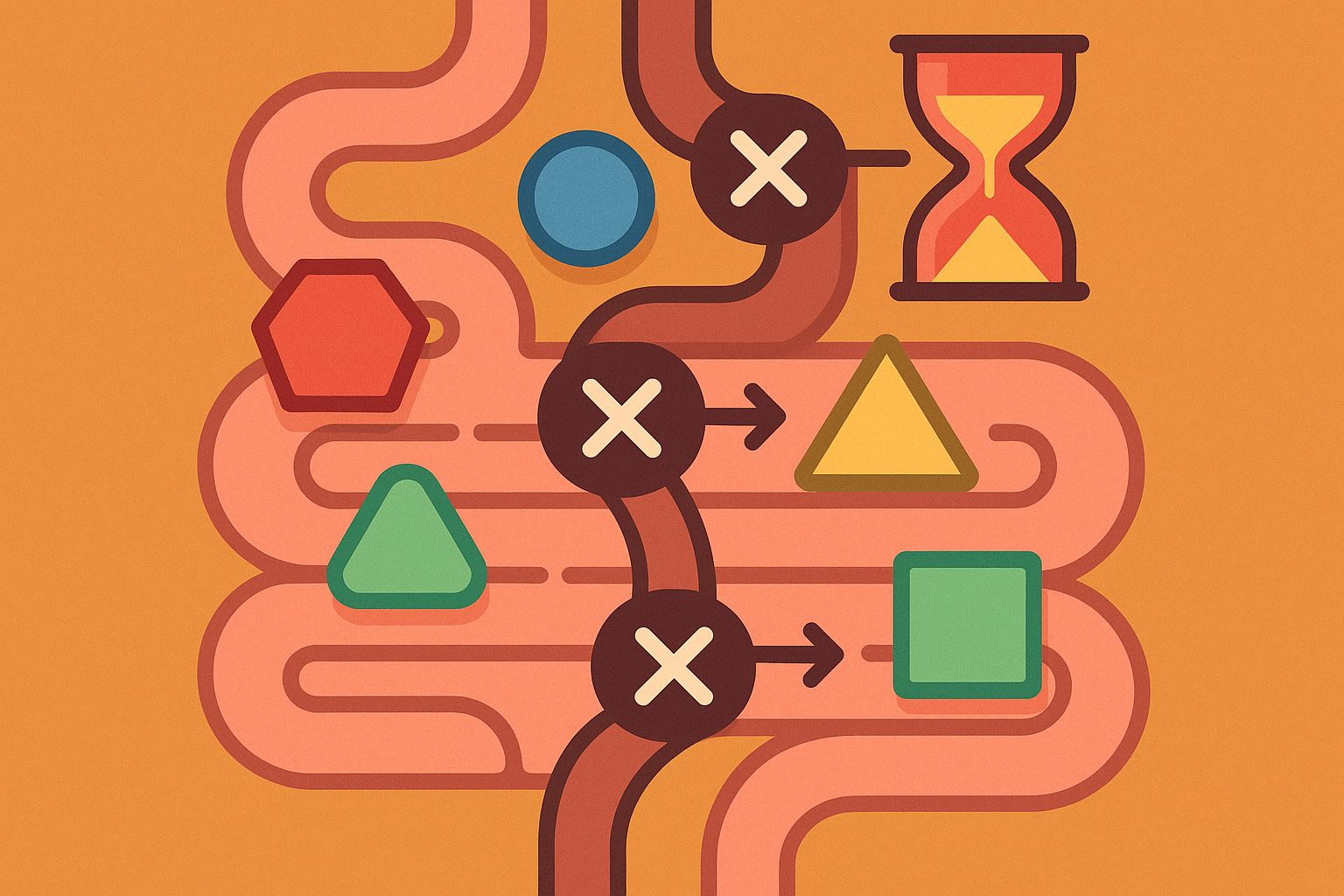
The fat-soluble vitamin strategy that actually works
Vitamins A, D, E, and K need fat to be absorbed, but most people just randomly hope they’re getting enough healthy fats throughout the day. Strategic pairing within your 2100-calorie distribution can dramatically improve how well your body uses these crucial nutrients.
I pair my fat-soluble vitamin sources with my highest-fat meal of the day. If I’m having salmon (hello, vitamin D), I make sure there’s avocado or olive oil in the same meal. Your body can only absorb these vitamins when fat is present, so why leave it to chance?
The antioxidant timing trick you’re probably missing
Compounds in berries, green tea, and dark chocolate can have their antioxidant effects amplified by up to 300% when consumed during specific times. This isn’t about eating more antioxidant foods – it’s about timing them when your body can actually use them effectively.
The best time I’ve found for antioxidant-rich foods is about 30 minutes before or after exercise, when your cells are primed for nutrient uptake. That post-workout smoothie with berries isn’t just delicious – it’s hitting your system when it can do the most good. Could be placebo effect, honestly, but I feel better when I time it this way.
The Psychology Behind Why 2100 Calories Never Feels Like Enough
Here’s something that blew my mind – and it’s probably why you feel hungry even when you’re eating plenty. The frustrating truth about feeling unsatisfied on your 2100 calorie meal plan usually has nothing to do with the actual amount of food. Your brain’s reward system, what you expect food to taste like, and emotional eating patterns create a complex web of satisfaction signals that can make you feel deprived even when you’re nutritionally well-fed.
Understanding these mental patterns is often the difference between a meal plan you can stick with and one you abandon after two weeks. I’ve watched people (including myself) completely change their relationship with food just by addressing these psychological quirks.
Your brain gets bored faster than you think
You know how your favorite song gets boring if you play it too much? Your brain does the same thing with food. Even perfectly balanced 2100-calorie meals can start triggering psychological hunger if you don’t strategically vary your approach. This isn’t about willpower – it’s about understanding how your brain actually works.
The flavor rotation system that prevents diet fatigue
Systematic flavor changes every 3-4 days prevent your brain from adapting to your meals while keeping your caloric intake consistent. This approach maintains psychological satisfaction without requiring you to constantly plan new meals or calculate different calorie counts.
I started doing this thing where I’d pick a flavor theme for the week – sounds super organized, right? In reality, it’s more like “okay, I bought a bunch of mushrooms so I guess this is umami week.” Same calorie targets, completely different psychological experience.
The key is rotating the dominant flavor, not changing everything. My base meals stay the same, but the seasonings and accent ingredients shift every few days. It tricks my brain into thinking I’m eating completely different food.
Week 1 – Umami Focus: Base breakfast of Greek yogurt with berries becomes Greek yogurt with berries and a drizzle of tahini. Lunch salad gets mushrooms, aged parmesan, and miso dressing. Dinner protein is seasoned with soy sauce and garlic.
Week 2 – Bright & Acidic: Same Greek yogurt now has lemon zest and a splash of pomegranate juice. Salad gets citrus segments, tomatoes, and balsamic vinegar. Dinner protein is marinated in lime juice and herbs.
Why you need one new thing every week
Introducing one completely new ingredient or preparation method weekly maintains your brain’s interest and prevents the psychological plateaus that lead to meal plan abandonment. This novelty doesn’t need to be dramatic – even a new spice or cooking technique can reset your brain’s engagement with your food.
Every Sunday, I pick one ingredient I’ve never cooked with before or try a preparation method that’s new to me. Last week it was jicama (weird but surprisingly good roasted). This week I’m trying tahini in my morning smoothie instead of almond butter.
It doesn’t have to be exotic or expensive. Sometimes it’s just buying a different variety of apple or trying steamed vegetables instead of roasted. The point is giving your brain something novel to process.
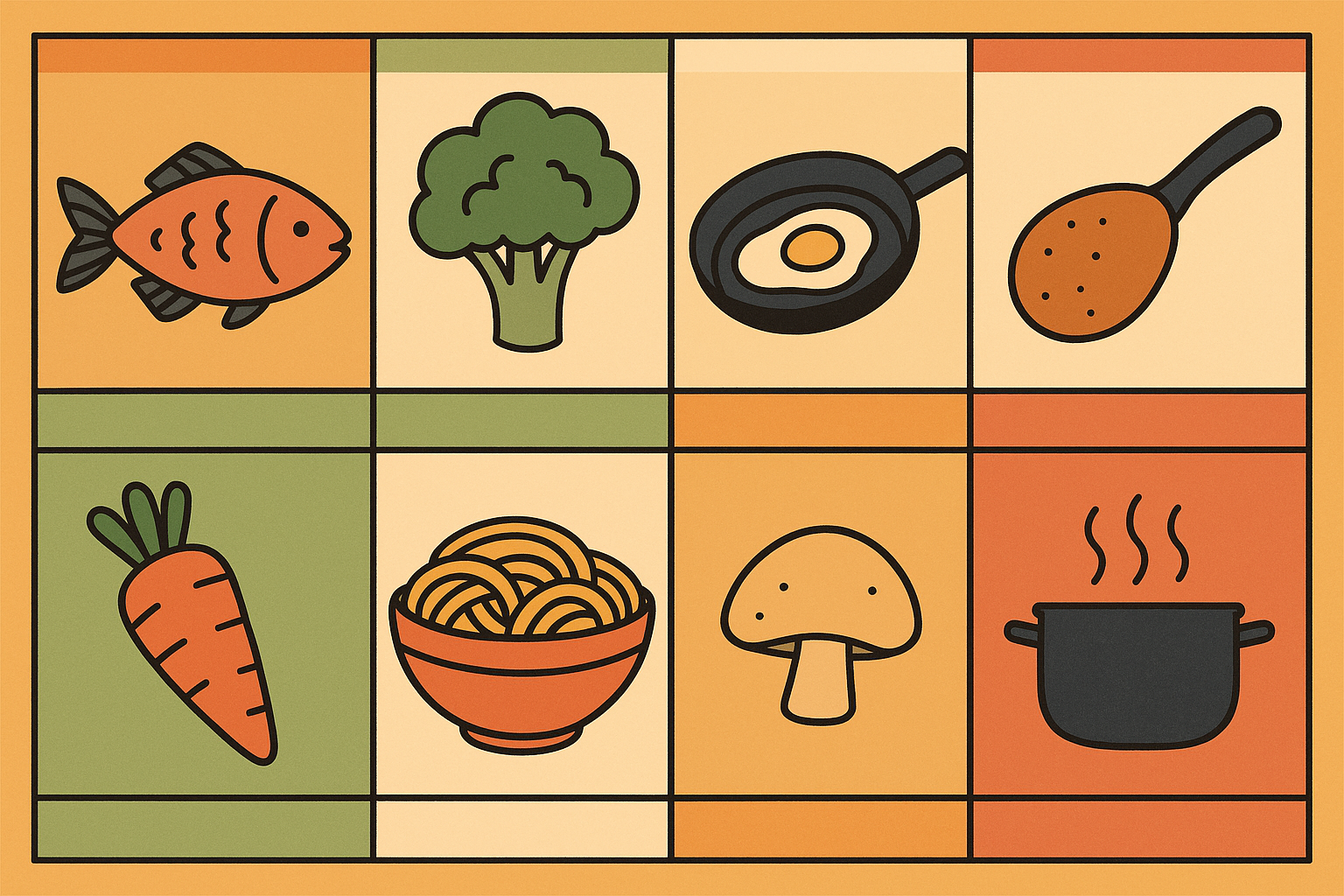
The sensory satisfaction formula most people ignore
Physical properties of food – texture, temperature, color contrast – significantly impact how full you feel. You can optimize fullness and satisfaction within your 2100 calories through strategic sensory design rather than just focusing on macronutrients and portions.
The texture mix that maximizes fullness
Incorporating different textures (crunchy, creamy, chewy, smooth) within each meal maximizes sensory satisfaction and triggers stronger “I’m full” messages to your brain. This isn’t about eating more food – it’s about eating food that sends stronger satisfaction signals.
Every meal needs at least three different textures to feel complete to me now. Breakfast might be creamy Greek yogurt, crunchy granola, and chewy dried fruit. Lunch could be smooth hummus, crispy vegetables, and chewy whole grain pita.
When all your food has the same texture, your brain doesn’t register the meal as satisfying, even if the calories are perfect. Your mouth gets bored and keeps looking for something more interesting.
Temperature contrast changes how full you feel
Strategic temperature variation within meals activates different neural pathways and enhances the perception of meal completeness. This simple technique can make the same 2100 calories feel significantly more satisfying without any additional food or preparation time.
This principle works especially well when you understand 5 simple ways to beat bloat and improve digestion, as temperature variety can enhance digestive satisfaction signals within your 2100 calorie meal plan.
I started adding temperature contrast to my meals after reading about how it affects satisfaction signals. Now my salads always have something warm (grilled chicken, roasted vegetables, warm quinoa) mixed with cool elements. Soups get a dollop of cool yogurt or fresh herbs.
It sounds minor, but the difference in how satisfied I feel after eating is honestly surprising. Your brain processes temperature changes as variety, which translates to feeling more complete after meals.
Why Your Genetics Make Generic Meal Plans Useless
Generic 2100-calorie meal plans completely ignore the massive individual variations in how your body actually processes food. What makes you, you – including how sensitive you are to insulin, how your thyroid functions, genetic variations, and gut bacteria composition – determines whether 2100 calories will optimize your health or create problems.
Without accounting for these individual factors, you’re essentially guessing about what will work for your unique body. I’ve seen identical twins respond completely differently to the same 2100 calorie meal plan because their bodies were so different.
Your metabolic fingerprint determines everything
No two people have identical responses to the same foods and calorie amounts. Factors including how you handle insulin, stress hormone production, and genetic variations in nutrient processing create a unique signature that requires personalized adjustments to any standardized meal plan approach.
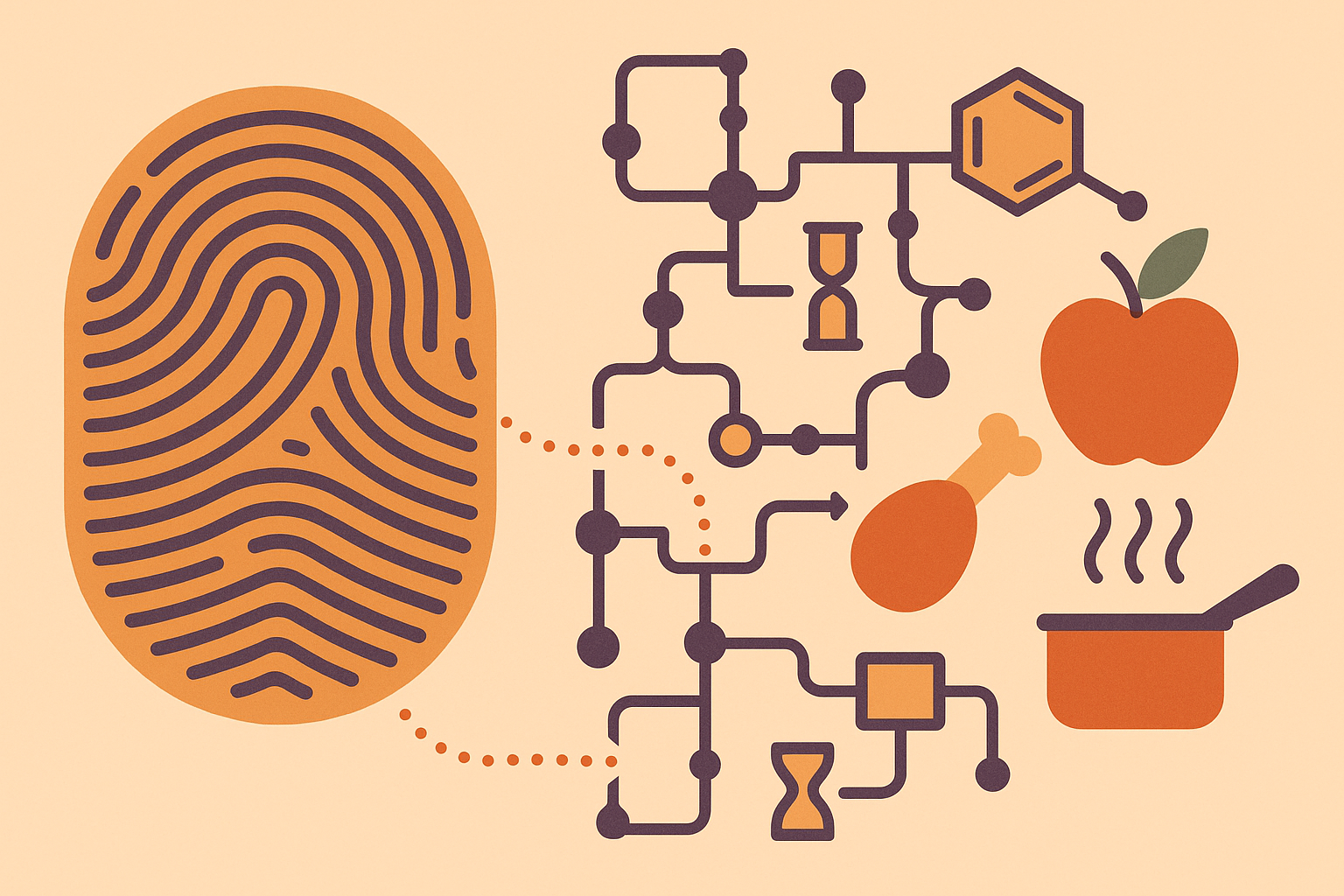
Blood sugar responses reveal your food truth
Using glucose monitoring to track how different foods within your 2100-calorie plan affect your blood sugar provides concrete data about which meals work for your body versus which ones cause problematic spikes. This eliminates guesswork and allows for precise meal customization based on your individual responses.
I started testing my blood sugar before meals and 1-2 hours after eating, and honestly? It was eye-opening. The first week of tracking was honestly annoying as hell, but the results were worth it. Foods I thought were “healthy” were spiking my glucose above 140 mg/dL, while some foods I’d been avoiding barely moved the needle.
Sweet potatoes, which every meal plan recommends, sent my blood sugar through the roof. But white rice with protein and fat? Barely any spike at all. Your body’s response might be completely different from mine, which is exactly the point.
Now I test any new meal combination for a few days before making it a regular part of my rotation. If it causes spikes, I adjust portions or food combinations until I find what keeps my levels stable.
According to data from meal planning platforms, pre-made PDF plans typically provide 2100 calories with 146g protein, 132g net carbs, 95g fat, and 32g fiber per day, but cannot be customized for individual metabolic responses. Source: Strongr Fastr
How stress hormones hijack your calories
Your individual stress response patterns directly influence whether your 2100 calories get used for energy or stored as fat. High cortisol levels can completely change how your body uses nutrients, requiring stress-responsive adjustments to meal timing and composition rather than just following a standard eating schedule.
When I’m stressed (which, honestly, is more often than I’d like), my body handles the same 2100 calories completely differently. What normally gives me steady energy instead gets stored around my midsection, and I feel hungry even after substantial meals.
I’ve learned to adjust my meal timing based on my stress levels. During high-stress periods, I eat smaller, more frequent meals and avoid large evening meals entirely. When life is calmer, I can handle bigger meals without issues.
Your stress patterns are probably different from mine, but the principle remains: your cortisol response changes how those calories behave in your body.
Your gut bacteria run the show more than you realize
The composition of bacteria in your gut determines how efficiently you extract nutrients from your 2100 calories and influences everything from inflammation levels to neurotransmitter production. Two people can eat identical meals and have completely different outcomes based solely on their gut bacteria differences.
The prebiotic strategy that reshapes your metabolism
Strategically incorporating specific prebiotic fibers within your 2100-calorie framework can actually reshape your gut bacteria composition to better support your goals. This isn’t about adding supplements – it’s about using food to cultivate the bacterial environment that makes your calories work more effectively.
I introduce 5-10g of different prebiotic fibers daily – inulin from garlic and onions, resistant starch from cooled potatoes and rice, pectin from apples. But here’s the key: I rotate the sources weekly to encourage bacterial diversity.
Week one might focus on Jerusalem artichokes and asparagus. Week two, I emphasize green bananas and oats. Week three brings in chicory root and dandelion greens. Same calorie targets, but I’m feeding different bacterial populations.
Within about 3 weeks, I noticed my digestion improved and my energy became more stable throughout the day. The same foods that used to cause bloating or energy crashes started working better for me. Could be coincidence, but I’m not messing with what works.
Fermented foods aren’t just trendy – they’re metabolically strategic
Live fermented foods provide beneficial bacteria that can improve how well you extract nutrients from your meals and reduce inflammation that interferes with proper metabolism. When integrated thoughtfully into your caloric framework, they can make your 2100 calories more effective.
This approach works even better when combined with understanding are drinking vinegars the next big thing for gut health, as these can support the beneficial bacteria you’re cultivating through your 2100 calorie meal plan.
I include some form of fermented food with at least one meal daily – kimchi with lunch, kefir in my morning smoothie, or sauerkraut as a dinner side. But timing matters more than I initially realized.
Fermented foods work best when your stomach acid is lower, so I avoid having them with high-protein meals that require lots of acid for digestion. Instead, I pair them with plant-heavy meals or have them as snacks between meals.
The World Food Programme’s classification system reveals that people experiencing food insecurity at Phase 2 consume exactly “2,100 calories per day, meaning they barely have an adequate diet to meet their food needs” according to WFP, highlighting how critical optimal utilization of these calories becomes for overall health and satisfaction.
The Environmental Factors Sabotaging Your Best Efforts
Your 2100 calorie meal plan doesn’t exist in a vacuum – it’s constantly influenced by sleep quality, exercise timing, social situations, and environmental stressors that can either support or completely undermine your nutritional goals. These external factors often have more impact on your success than the actual food choices, yet most people completely ignore them when planning their meals.
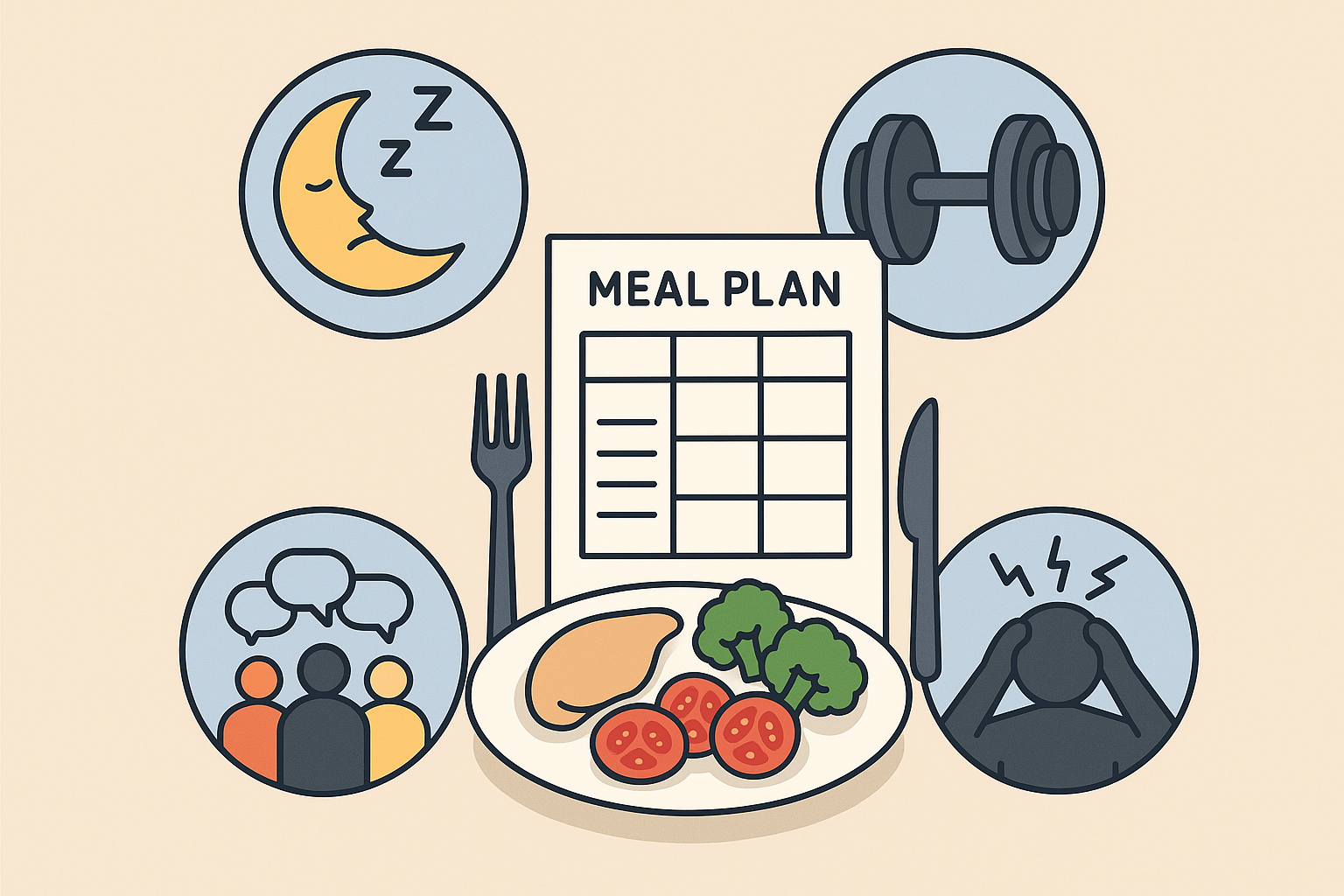
Sleep quality controls your hunger hormones more than food
Poor sleep disrupts the hormones that control hunger, making it nearly impossible to feel satisfied on any amount of calories, regardless of food quality. Without addressing sleep optimization, even the most perfectly planned 2100-calorie approach will feel like constant deprivation and trigger overwhelming cravings.
Syncing your biggest meals with your natural energy rhythms
Aligning your largest meals with your natural energy peaks can improve hormone regulation and make the same 2100 calories feel significantly more satisfying. This requires honest assessment of when you naturally feel most energetic versus when you typically eat out of habit or convenience.
I tracked my sleep quality and meal timing for a week, and the patterns were pretty revealing. My natural energy peak hits around 10 AM and again around 2 PM, but I was eating my biggest meal at 7 PM when my energy was already declining.
Now I align my largest meals (about 40-45% of my calories) with those natural energy peaks. Breakfast around 9 AM gets about 800 calories, lunch around 1 PM gets another 600, and dinner is just 400-500 calories of lighter fare.
The difference in how satisfied I feel is honestly dramatic. Same calories, same foods, but distributed according to when my body actually wants and can process them effectively.
Energy-Aligned Meal Schedule:
- 9:00 AM (Energy Peak #1): 800-calorie breakfast with scrambled eggs, avocado toast, Greek yogurt with berries
- 1:00 PM (Energy Peak #2): 600-calorie lunch with grilled chicken salad, quinoa, and mixed vegetables
- 7:00 PM (Energy Decline): 400-calorie dinner with baked salmon, steamed broccoli, and small sweet potato
- Strategic snacks: 300 calories distributed based on hunger cues
Exercise timing creates opportunities you’re missing
The timing of workouts relative to your 2100-calorie distribution creates specific windows that can enhance fat burning, muscle building, and overall energy efficiency. Most people treat exercise and nutrition as separate entities, missing powerful synergies that can make the same calories work much more effectively.
The pre-workout fueling sweet spot
Consuming 15-20% of your daily calories (315-420 calories) about 1-2 hours before exercise optimizes performance while creating favorable conditions for how your body uses nutrients after your workout. This isn’t about eating more – it’s about strategic timing of calories you’re already planning to consume.
I time about 400 calories to hit my system 90 minutes before I exercise. Usually it’s something with easily digestible carbs and moderate protein – maybe oatmeal with berries and Greek yogurt, or a banana with almond butter and a small smoothie.
This gives me solid energy for my workout without feeling heavy, and it sets up my post-exercise meal to be used more effectively for recovery rather than just general energy needs.
Sample meal plans show that strategic pre-workout meals typically contain 315-420 calories with combinations such as “225 cals, 11p, 7c, 15f” from sources including sweet potato breakfast skillets. Source: Strongr Fastr
The post-workout window actually matters
The 30-90 minutes after exercise represents a unique state where your body can utilize calories more efficiently for recovery and muscle building rather than storage. Taking advantage of this window can make your largest meal of the day work harder for your goals.
When possible, I time my biggest meal within 2 hours post-workout. My muscles are primed to soak up nutrients, my insulin sensitivity is elevated, and my body is in repair mode rather than storage mode.
This meal gets 25-30g of protein minimum, plus carbs to replenish what I used during exercise. Same calories I was going to eat anyway, but now they’re hitting my system when they can do the most good.
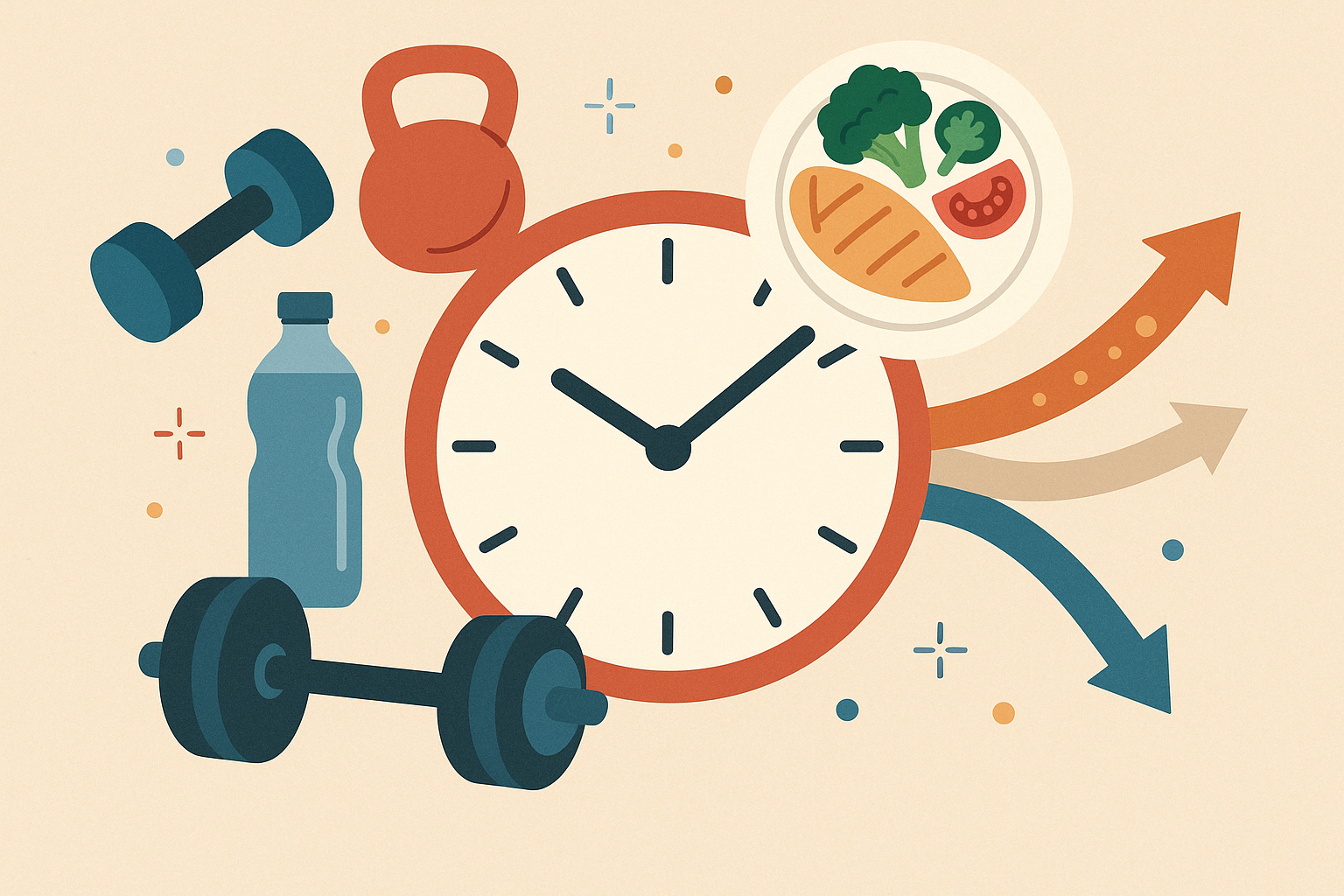
Social eating doesn’t have to derail everything
Social situations often completely derail calorie-controlled eating plans, but strategic preparation and flexible frameworks can help you maintain your 2100-calorie goals while preserving relationships and enjoying social connections. I had to figure out how to not be that person who brings a food scale to restaurants or skips every social event because “it doesn’t fit my macros.”
The calorie banking strategy that actually works
Building planned flexibility into your 2100-calorie structure by saving calories for social events and having backup meal options prevents the all-or-nothing mentality that leads to complete plan abandonment. This approach treats social eating as a normal part of life rather than a deviation to feel guilty about.
When I know I have a dinner out or social event coming up, I “bank” 200-300 calories from earlier in the day. Not by skipping meals, but by having slightly smaller portions at breakfast and lunch.
I also keep a mental list of backup meals that I know the calorie counts for. If plans change suddenly, I’m not stuck trying to calculate calories on the fly or just giving up entirely.
The goal isn’t perfection – it’s consistency over time. One higher-calorie social meal doesn’t ruin anything if the overall weekly pattern stays on track.
| Social Situation | Calorie Banking Strategy | Backup Plan | Success Tips |
|---|---|---|---|
| Restaurant dinner | Save 200-300 calories from breakfast/lunch | Grilled protein + vegetables | Check menu online first |
| Office party | Eat normal breakfast, lighter lunch | Pre-portioned snacks ready | Focus on protein foods |
| Weekend brunch | Skip evening snack day before | Egg-based dishes priority | Share plates when possible |
| Happy hour | Bank 150 calories, eat beforehand | Nuts or protein bar backup | Alternate alcohol with water |
Making the Jump from 2000 to 2100 Calories Without Metabolic Chaos
Transitioning from a 2000 calorie diet to a 2100 calorie meal plan isn’t simply about eating 100 more calories of anything – it requires strategic implementation to avoid disruption while maximizing the benefits of increased energy availability. Many people make this transition poorly and end up feeling worse rather than better, missing the opportunity to improve their body composition and energy levels.
Where those extra 100 calories go makes all the difference
The additional 100 calories should be strategically placed during periods of highest demand rather than distributed evenly throughout the day. This approach leverages your body’s natural rhythms and activity patterns to ensure the extra energy gets used effectively rather than stored.
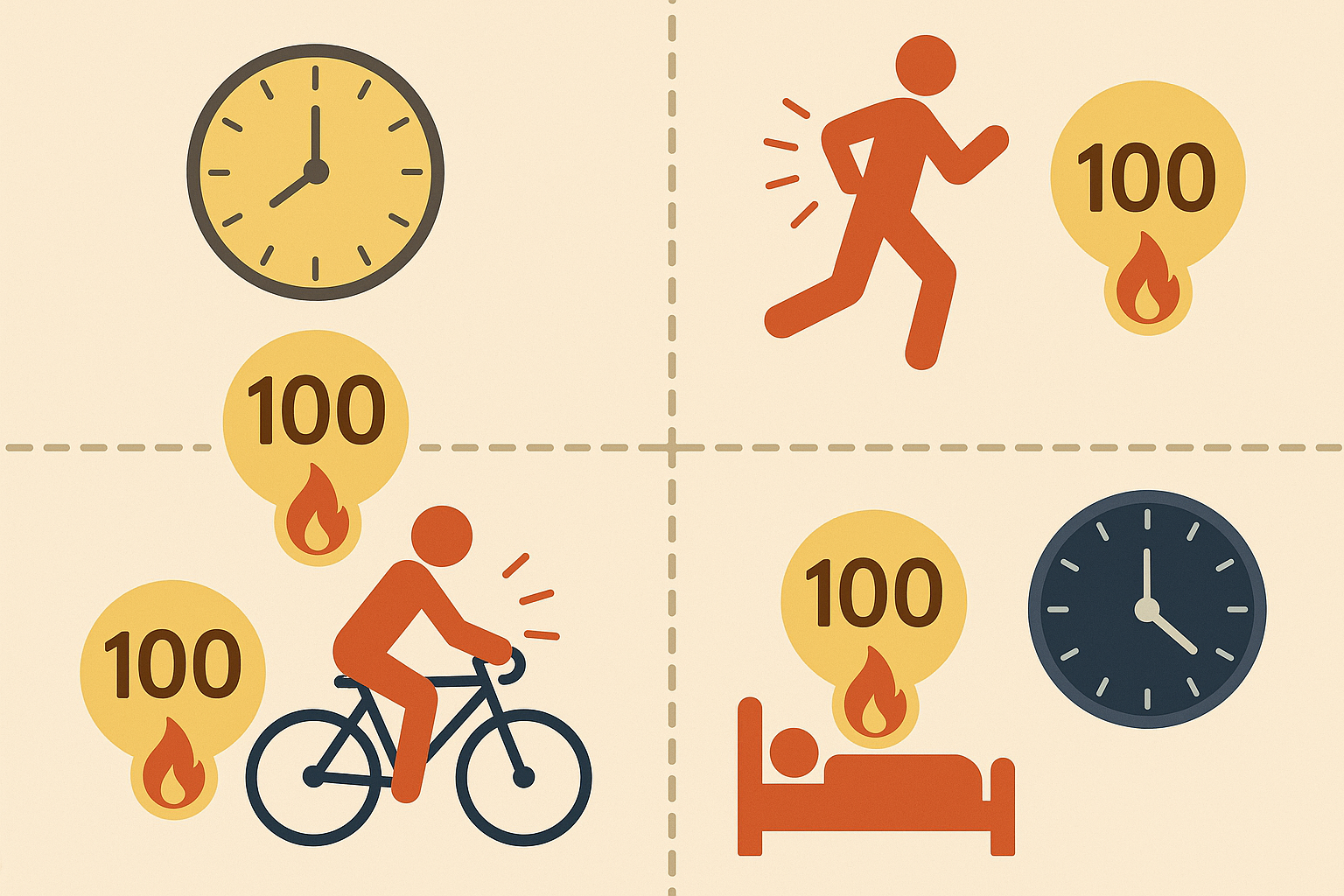
Strategic placement beats even distribution
Adding the extra 100 calories to your post-workout meal (if you exercise) or to your morning meal (if you’re sedentary) takes advantage of when your body can best utilize additional energy. This targeted approach prevents the confusion that can occur when you just eat slightly more of everything.
If you exercise regularly, add those 100 calories to your post-workout meal. Your muscles are primed for nutrient uptake, and the extra energy will support recovery rather than getting stored.
For sedentary folks, I recommend adding the calories to breakfast during that morning insulin sensitivity window. Maybe an extra tablespoon of nut butter, a larger piece of fruit, or more oats in your bowl.
I monitor energy levels and hunger patterns for 2-3 weeks after making the change, then adjust the placement based on how my body responds. Some people do better with the calories at lunch, others prefer them as an afternoon snack.
Meal planning platforms show that customizable diet plans can range from 2050-2125 calories with varying macronutrient distributions such as “2125cal, 139g protein, 191g net carbs, 74g fat, 37g fiber” depending on individual needs. Source: Strongr Fastr
Rebalancing your macros with the extra calories
The additional 100 calories provide an opportunity to address imbalances that may have existed at the 2000-calorie level, particularly protein inadequacy or essential fatty acid deficiencies. This is about optimizing nutrition quality, not just increasing quantity.
Most people moving from a 2000 calorie meal plan were probably under-eating protein. Those extra 100 calories are perfect for adding 20-25g more protein daily – maybe an extra egg at breakfast, a larger portion of chicken at lunch, or a protein-rich snack.
Others might use the calories to increase healthy fats, especially if they were avoiding fats to stay within their 2000-calorie limit. An extra tablespoon of olive oil, a small handful of nuts, or half an avocado can make a huge difference in satisfaction and nutrient absorption.
100-Calorie Protein Additions:
- 1 extra large egg (70 calories, 6g protein)
- 1 oz additional chicken breast (30 calories, 6g protein)
- 2 tbsp Greek yogurt (35 calories , 6g protein)
- 1 string cheese (80 calories, 7g protein)
- 1/4 cup cottage cheese (45 calories, 11g protein)
Making digital resources work in real life
PDF meal plans and digital resources provide helpful structure, but they require systematic personalization and real-world adaptation to be truly effective within your unique lifestyle, preferences, and needs. The key is using them as templates rather than rigid prescriptions.
Customizing generic plans for your reality
Generic 2100 calorie meal plan pdf options serve as useful foundations for meal timing and portion guidance, but they need systematic modification based on what you actually enjoy eating and what fits your cooking abilities and time availability.
I use PDF meal plans as my starting framework – they give me the calorie targets and basic meal structure. But then I substitute ingredients based on what I actually enjoy eating and what fits my cooking abilities.
Don’t enjoy salmon? Swap in chicken or tofu with similar calories. Hate quinoa? Use brown rice or sweet potato instead. The plan gives you the skeleton, but you need to put your own flesh on the bones.
I also create backup options for each meal to prevent decision fatigue. If the plan calls for a specific salad but I don’t have those ingredients, I have 2-3 alternative salads with similar calorie counts ready to go.

Tracking what actually matters for long-term success
Combining structured meal plans with systematic tracking of energy, mood, sleep, and physical markers creates a feedback loop for continuous optimization. This goes beyond just tracking calories to understanding how your food choices affect your overall well-being and life quality.
I track daily energy levels on a 1-10 scale alongside whether I stuck to my meal plan. After a few weeks, patterns emerge about which foods or meal timings correlate with higher energy days.
Sleep quality gets tracked too, especially how it relates to my evening meal composition. Heavy dinners consistently mess with my sleep, while lighter evening meals help me wake up more refreshed.
Physical markers including weight and measurements get recorded weekly, but I’m more interested in trends over 3-4 weeks than daily fluctuations. The goal is understanding what’s working long-term, not obsessing over daily changes.
Every 2-3 weeks, I review my tracking data and adjust meal plan components based on what the numbers are telling me. Maybe I need more carbs on workout days, or perhaps my afternoon snack timing needs tweaking.
The beauty of this approach is that your meal plan evolves with you instead of being a static set of rules you either follow perfectly or abandon completely. My tracking looks nothing like those Instagram posts, and most days I just try to hit “close enough.”
Understanding proper calorie utilization becomes even more critical when considering that in food security classifications, Phase 4 emergency conditions involve people having “access to three or fewer food groups like fruits, grains and vegetables, and take in less than 2,100 calories per day” according to WFP, emphasizing how maximizing the nutritional value of adequate calories is essential for optimal health.

Final Thoughts
Successfully implementing a 2100 calorie meal plan requires moving beyond generic advice toward a personalized approach that accounts for your unique body, lifestyle constraints, and individual responses to different foods and timing strategies. The difference between a meal plan that works long-term versus one you abandon after a few weeks often comes down to these nuanced factors that most people never consider.
Look, I probably overthink this stuff, but by understanding how your body’s natural rhythms, psychological patterns, and environmental factors interact with your food choices, you can create a sustainable approach that feels satisfying rather than restrictive. The goal isn’t perfect adherence to someone else’s 2100 calorie meal plan pdf – it’s developing the knowledge and flexibility to make your 2100 calories work optimally for your unique situation and goals.
Will this work for everyone? Probably not. Did it help me? Yeah, actually it did. Is it perfect? Nope. Is it better than what I was doing before? Definitely. Your mileage may definitely vary, and I’m not a doctor – just someone who got tired of being tired and figured some stuff out along the way.

